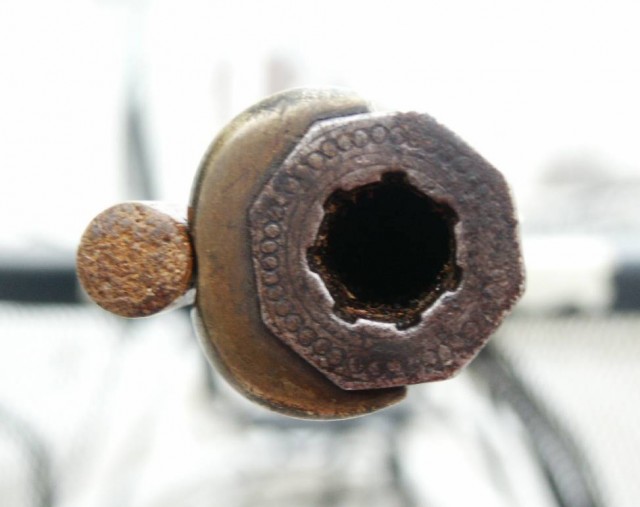Artificer said:
"My own original barrel shows the same .02 widening at the muzzle"
May I ask what caliber it is? Also do you mean .02" on each side of the diameter of the bore or .01" on each side of the bore?
Also, do you have a general idea of how concentric the coning was on original rifles you have seen and heard about? The reason I ask is because Diderot shows examples of both "triangular" shaped chamfering reamers as well as piloted reamers.
Gus
.01 on each side, .02 total widening. That is an rounded number, but it seems pretty consistent. The only barrel I have checked for concentrically is my own. That is something to add to my list of things to check, I guess. My method is to take a measurement just inside the bore, 1/32-1/16" so I get beyond any damage to the bore, and then take another measurement as deep as the internal readers of my calibers will read, and compare the two. Hard to get a good number, which is why I'm rounding to the nearest hundredth. Plus, with seven grooves I'm usually measuring from land to the bottom of a groove, so getting an actual caliber is surprising difficult. Evidently other people have the same problem.
Mine is a .38 mid-19th century cast steel barrel, and the rifling seems completely worn away - looking down the bore with the breech out I can see spirals but there hardly seems to be any height difference between lands and grooves, so it almost looks like the rifling is just drawn onto the bore. Very odd. If it wasn't so small in the bore, I'd suspect that it was deliberately bored out smooth. I was rather surprised to discover that it was coned, and I'm still open to the possibility that it is the result of wear, though I think wear over an deliberate cone is also a possibility.
Mine doesn't have the rifling filed out on the ends like the 18th century rifles I was looking at. In those, the rifling has been enlarged too, and a casual glance would make it look like nothing had been done at the muzzle. Had the barrel been worn by the rod sufficient cause an .02" funnel at the muzzle, the rifling would be near eradicated, and had been due to gas erosion (your suggestion that I was specifically looking for at the time) the ends of the rifling wouldn't look as crisp as they do. It was the very visible rifling and the consistency of that .02" that convinced me that I was looking at a deliberate feature and not wear. Up to then I considered it more likely that coning was the result of gas erosion and that the 18th and 19th century filing of the lands allowed them to loads easily despite the lack of crown.
I don't want to post my own pictures on the 'net, as I have been specifically asked not to do so by one man as a condition for allowing me to photograph his guns, and while others have not specifically made the same condition I'd rather be safe than sorry. Here are two pictures posted elsewhere, though, that illustrate what I am talking about:
Bridger Hawken
Dickert
I'm pretty sure that the Hawken is coned at .02", as is typical of Hawkens I'm told, but can't find that info just know. Not sure about the Dickert.
Nevertheless, for the moment assume that they have that .02" widening, and you'll be seeing pretty much what I have been looking at. No real crown, just a gentle rounding at the join, and visible rifling. Outside of assuming freakishly deep rifling, I can't see any way that cone could have been produced by wear and still leave that rifling intact.
I had a different theory until I went and measured inside some bores myself.




 Gee!! Ya would think someone said "WD-40" here to cause all this flap. :shocked2: :rotf:
Gee!! Ya would think someone said "WD-40" here to cause all this flap. :shocked2: :rotf:

